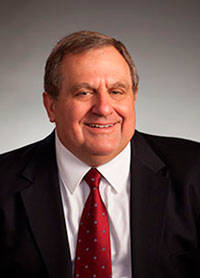Traditionally, media coverage of the Paris Air Show focuses on the battle between Boeing and Airbus over market share for newer large commercial jets. However, this year Mitsubishi shared the spotlight with its state-of-the-art “SpaceJet.”
SpaceJet is not the latest aircraft to join British billionaire Sir Richard Branson’s Virgin Galactic suborbital space fleet. It is a new regional passenger aircraft designed to compete head-to-head with Brazil’s Embraer E-175 for routes between larger airports and smaller cities.
Horizon flights between Seattle and TriCities or Portland and Missoula are examples.
Regional or connector aircraft traditionally have tight narrow seats crammed close together. They have little leg room and limited overhead storage. Most carriers collect carry-on luggage on the tarmac and stow it in the baggage compartment. Disembarked passengers wait at the aircraft while ground crews retrieve their luggage. The process adds to travel time and inconvenience.
Comfort and convenience are important to regional fliers. That is a key reason why Alaska’s Horizon Airline is switching out its Bombardier Q400 turbo props with E-175. While both aircraft are designed to carry 76 passengers, the Embraer is roomier, more comfortable and has added overhead storage.
Mitsubishi’s SpaceJet is the first airliner built in Japan since the 1960s. After its debut in Paris earlier this year, it began certification flights at the former Larson Air Force Base near Moses Lake. SpaceJet has over 400 orders.
Mitsubishi’s promotional literature claims it is “reimaging a better passenger experience by reinventing the business of regional air travel” with SpaceJet. That in nutshell is what the regional carriers must do to compete.
At stake, particularly in the market for jets with fewer than 100 seats, is $135 billion in sales over the next 20 years or so, according to industry group Japan Aircraft Development Corp.
Horizon’s business is growing rapidly. In July, Alaska Air Group, parent to Horizon, reported its regional traffic increased 14.6 percent on a 12.9 percent increase in capacity compared to July 2018.
“For years, Boeing and Airbus focused on larger, more-profitable jetliners and shifted away from the smaller planes, which have similar development costs but sell for lower prices.
Airbus’ deal with Bombardier and Boeing’s pact with Embraer signal that the big plane-makers intend to deny a foothold in the lucrative narrow-body market to ambitious newcomers, such as Commercial Aircraft Corp. of China,” Bloomberg reported in April. (Update: Mitsubishi bought Bombardier’s regional jet program in June).
“A longtime supplier of aircraft components to Boeing, Mitsubishi Heavy, the parent of Mitsubishi Regional Jet (MRJ), plans to emerge from its customer’s (Boeing) shadow,” Bloomberg added. It developed and manufactures major airframe components, including fuselage panels for the Boeing 777 and composite-material wing boxes for the 787.
Mitsubishi spent at least $2 billion over more than a decade developing SpaceJet. Its launch partner is All Nippon Airways (ANA)—- one of Boeing’s first 787 buyers.
“The aviation market in Asia is expected to grow further in the coming years, and there will be demand for these aircraft,” said Lee Dong-heon, an analyst at Daishin Securities Co. in Seoul. “The shift in the regional aviation segment we have seen over the last year or so has opened opportunities.”
In order to compete, Mitsubishi can’t just rely on its home market. The biggest customers therefore could be in the U.S., where large airlines try to cut costs by outsourcing short flights to smaller carriers that fly regional jets, Bloomberg concluded.
The good news is Mitsubishi has strong ties with Boeing and Washington State. MRJ is flight testing the SpaceJet in Moses Lake and established its U.S. headquarters in Renton.
Don C. Brunell is a business analyst, writer and columnist. He recently retired as president of the Association of Washington Business, the state’s oldest and largest business organization, and now lives in Vancouver. He can be contacted at theBrunells@msn.com.


